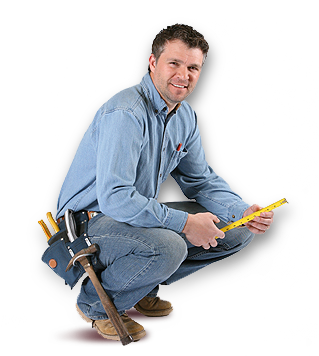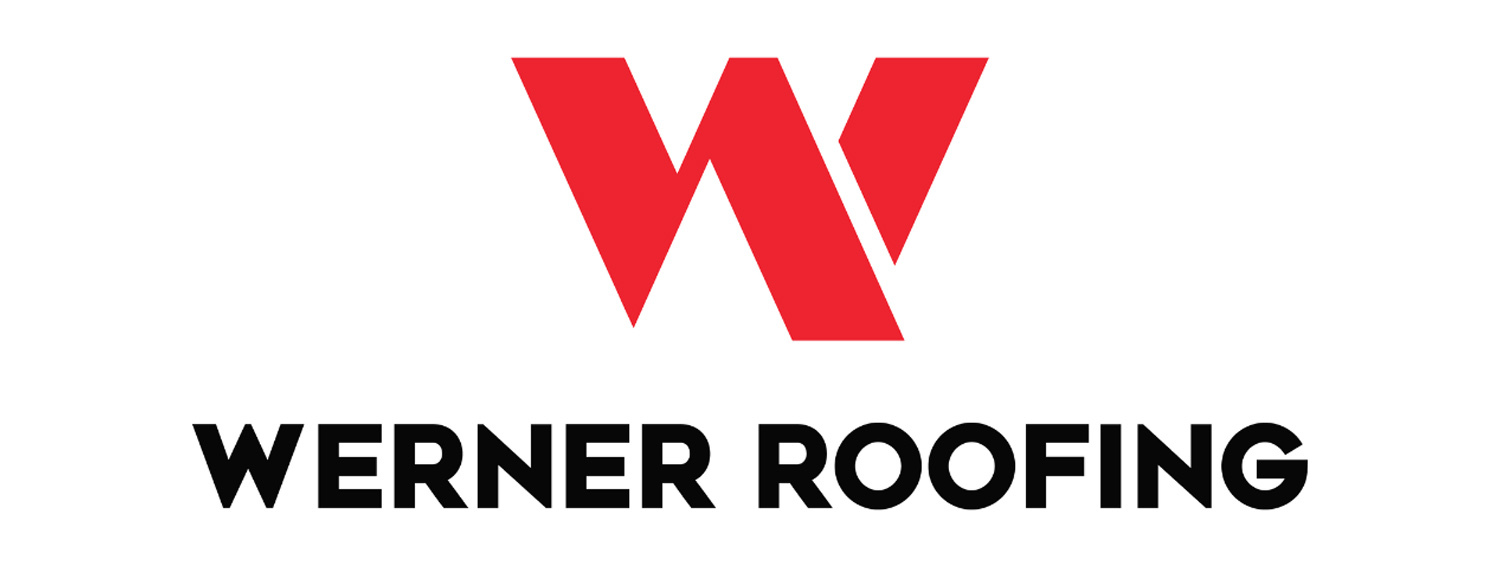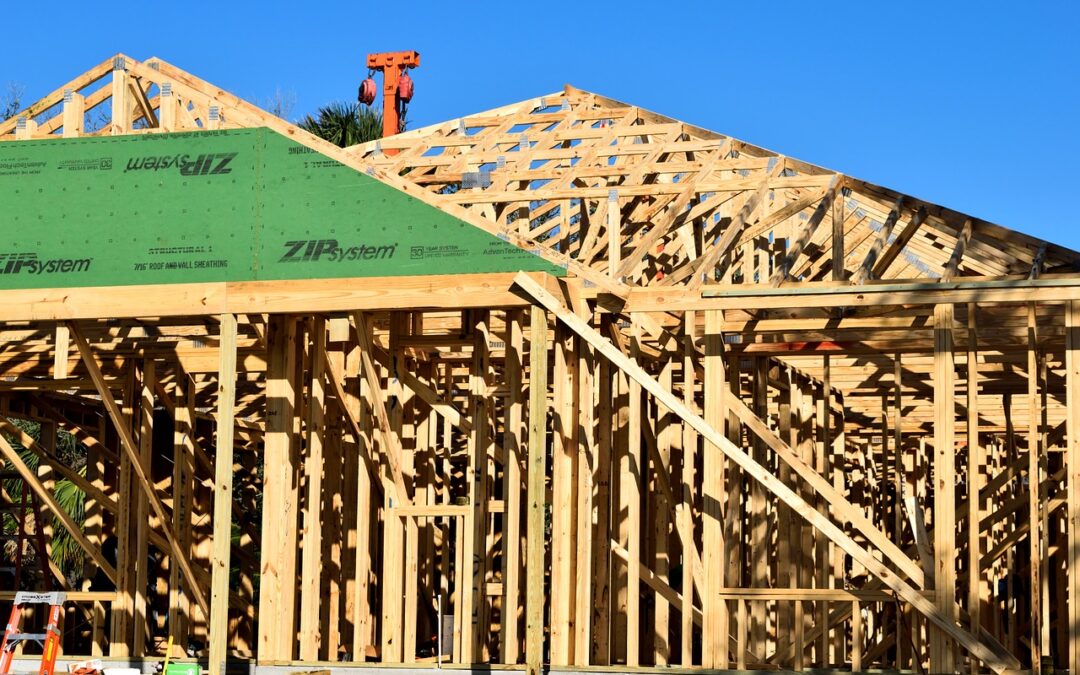If you’re new to homeownership, or if you’re having roof trouble for the first time, it may be a surprise to know about all the different components of a roofing system. Many homeowners don’t realize that their roof is comprised of much more than shingles and gutters. One essential component of every roofing system is roof sheathing.
So, what is roof sheathing? We’re here to break down roof sheathing and what it does.
What Is Roof Sheathing?
Roof sheathing, also known as roof decking, is a strong layer of wood boards that are fixed to your roof’s joists and trusses and add support. Your roofer will attach your shingles to these squares or planks of wood.
What Is Roof Sheathing Made Of?
There are two types of roof sheathing. It’s made of either oriented strand board (OSB) or plywood. Both materials are wood, but OSB is more lightweight and costs slightly less. Plywood is a very durable type of roof decking but tends to cost a bit more and is heavier.
Most roofers these days prefer OSB, unless they’re working with a heavier material like slate or concrete roofing tiles. In these cases, plywood is usually a better option.
What Does Roof Sheathing Do?
The primary function of roof sheathing is to strengthen your roof. It offers a sturdy support system on which to build the rest of your roof system.
What Benefits Does Roof Sheathing Offer?
In addition to adding strength to your roof, roof sheathing offers an array of benefits!
Helps Stops Leaks
When people first built asphalt shingle roofs a long time ago, roof sheathing wasn’t always used. Most homeowners found that without sheathing or decking, their roofs were much more likely to leak.
While today’s asphalt shingles feature several weatherproofing treatments, the additional layer of boards will give your roof another layer of protection against the elements. Since many sheathing boards are weatherproofed, this helps prolong the lifespan of your roof and keeps your home safe from water damage.
Adds Strength and Support
Roof sheathing helps distribute weight evenly across your roof. Since sheathing boards are affixed to your roof’s trusses and joints — its strongest supporting beams — they help ensure that heavy loads of snow and precipitation don’t cause bowing or sagging.
Sheathing boards also help your roof to hold up asphalt shingles. Shingles can be a little heavier than you’d expect, and sheathing helps ensure that any weight they add is distributed evenly across the span of your roof.
Fire Protection
Roof sheathing or decking can also help prevent fires. While nothing is 100% fireproof, many roof sheathing materials come with a fire retardant treatment that can help resist fires on the roof or in the attic.
How To Know When You Need New Roof Sheathing
Roof sheathing is a critical component of your overall roofing system. If yours is old, outdated, or damaged, you’ll want to have it replaced as soon as possible.
The most common reason to replace roof sheathing is when you re-roof your home, but there are a few other signs that will tell you it’s time to replace your sheathing.
Broken or Damaged Boards
If you can distinctly see broken sheathing boards, it’s time for a roof replacement. It’s not hard to spot damaged sheathing, as your roof will probably sag, and you may even see sawdust and broken parts in your attic.
Sheathing board damage can happen if a lot of weight is concentrated in one area — like if a tree branch or limb falls on the roof. It can also occur if your roof is well past its expected lifespan.
Water Damage
Water damage can be dangerous for any part of your roof. If you’re seeing leaks, puddles, or water stains in your ceiling, it’s time to replace at least one element.
Sheathing water damage is particularly bad because it can affect the structure of your roof. It’s best to have water-damaged boards replaced as soon as possible.
Rotting
If you can see parts of your roof’s sheathing beginning to rot, it’s definitely time for a replacement. Rotting sheathing is often caused by water damage, but it can be less evident if you haven’t yet seen leaks.
The best way to check for rotting sheathing is to head up to your attic with a flashlight. If sheathing has started to rot in places, you should be able to see darkened spots in the wood. If your attic isn’t too tall, you can also go around gently with a hammer or even just your hand to feel for soft spots in the wood.
Light Passing Through Holes in the Roof
As a general rule, seeing the sky through your roof is a bad sign. If you head up to your attic with a flashlight and can see the light passing through holes in your roof, it’s time to call a roofer. If the light is getting through, water can get through too.
Sagging Ceiling or Roofline
The most obvious way to identify roof sheathing damage is to see sagging in your ceiling or roofline. If you’re inside and see areas of the ceiling that seem a little closer to you than others, your sheathing might be to blame.
Similarly, if you can tell from outside the home that parts of your roof are sagging, it’s time to call a roofing contractor.
Roof Sheathing and Asphalt Roofing in Holland, MI
Your roof sheathing is an important component of your roofing system. It holds up your shingles, keeps you safe from the elements, and helps distribute weight evenly across your roof.
If you suspect your Holland or West Michigan home has damaged or old sheathing, get in touch with the experts at Werner Roofing. We’ve been building Holland roofs for years and would be happy to come and inspect your roof sheathing to let you know what’s happening. Schedule your free roofing estimate online today, or call us at 616-844-5382, and we’ll get you a no-obligation estimate based on a professional inspection.

OUR FREE ROOF INSPECTION
How do you know when it’s time for a new roof? The only way to be sure of your residential roof’s current condition is to have a licensed professional personally inspect it. Werner Roofing is proud to offer free roof inspections for every client, so you can be sure of your roof’s condition. Every Werner Roofing inspection comes complete with our promise: “We won’t recommend or sell a roof replacement unless it’s necessary.”


